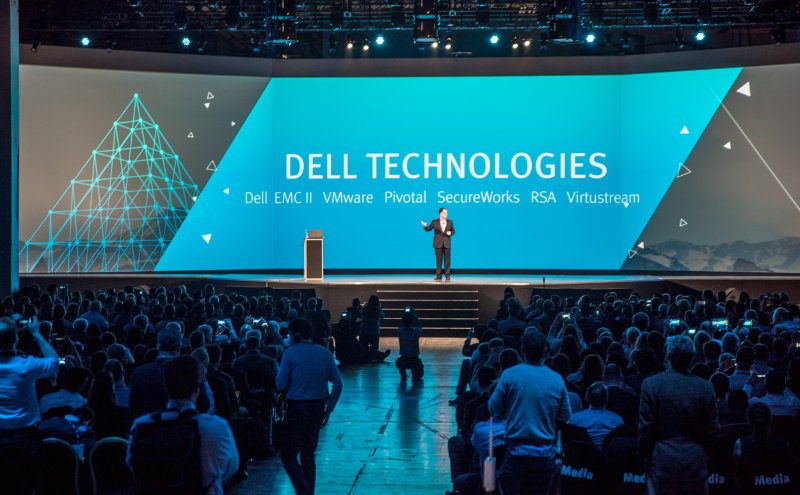
EMC used its annual, and possibly final EMC World conference in Las Vegas, to unveil multiple data centre products and services in addition to a data management product and cloud storage platform as the storage giant company promised to help customers tackle complex transformation initiatives.
CBR highlights the major releases and talking points from the first day of the conference.
1. The Dell/EMC merger
While plenty of products and services are coming out from the conference, the real focus for people is the merger and what is going on.
With the merger said to be on track and under the scope of the original arrangements, both Michael Dell, CEO, Dell and Joe Tucci, CEO of EMC, looked to ease any lingering concerns from the EMC customers.
At its most basic the messaging coming out from a key portion of the first day’s keynote was that everything will be ok, ‘we are better together because bigger is better.’
Under the new names of Dell-EMC for the enterprise brand and the main branding of Dell Technologies, the hope is that the merger will bring a whole end-to-end solution from datacentre to cloud, with analytics and everything else in the middle.
Apart from new names, the audience was just treated to a lengthy pitch of why the two are better together.
2. All-Flash
EMC clearly believes in all-flash as the main choice for customers’ primary storage, so it has unveiled the EMC Unity family of storage arrays.
Whether the name Unity was chosen in light of the disruption being caused by the Dell acquisition is unknown, but what is known is that the company is aiming the product at small and medium sized IT deployments.
Unity will be available in all-flash, hybrid, converged, and software defined configurations as the company hedges its bets as to how customers will look to deploy it, flexibility is key.
Unity joins other EMC products XtremIO, VMAX All Flash and DSSD D5 as the company aims to offer something for any data centre use case.
The last product offers what the company calls "cloud-like proactive management and monitoring," through a HTML5 task-oriented interface which will integrate with the VMware and Microsoft ecosystems for third-party management.
Unity offers up to 300K IOPS, dual-active controller architecture, support for file, block and VVols in addition to a REST-API for automation and DevOps use cases.
3. Virtustream
This is the first show that Virtustream has been a major part of and it’s being pitched as a public cloud vendor for mission critical applications.
With this in mind, the company has brought out the Virtustream Storage Cloud, a storage platform offering that is said to offer enterprise-levels of resiliency and performance with web scale capabilities.
Virtustream says that Storage Cloud will offer data durability of 13 x 9s and that it will be have available read-after failure in order to provide resiliency and data integrity in the case of a single site failure.
Basically the company is aiming to offer the most resilient cloud in the market in order to appeal to those businesses that want to put their mission critical applications in the cloud.
4. EMC MyService360
This is a cloud-based service dashboard that will be freely available to customers that are registered with EMC Online Support.
It is designed to offer near real-time visibility into the health and status of a customer’s EMC data centre environment.
Built using the company’s internal data lake it offers analytics and visualisation tools to help users get to grips with the products that they are using from EMC.
The product is being pitched as a way for EMC customers to "proactively address risk-readiness, avoid issues and expedite resolutions," the company said.
5. Enterprise Copy Data Management
Known as eCDM, this is an expansion of EMC’s portfolio in this area. It is basically a service to help customers reduce data sprawl and reduce the cost of storing and managing multiple copies of the same data.
What this offers is the ability to discover and use automation abilities to optimise the copying of data.
There are already tools in the market that offer capabilities like this but this is specific to EMC, so the idea is that it will be the best solution for those that are using EMC products.
Where this might play well is in highly regulated industries or countries, especially with the likes of the EU General Data Protection Regulation just around the corner. Businesses will increasingly have to know how many copies of data there is and where it is.






